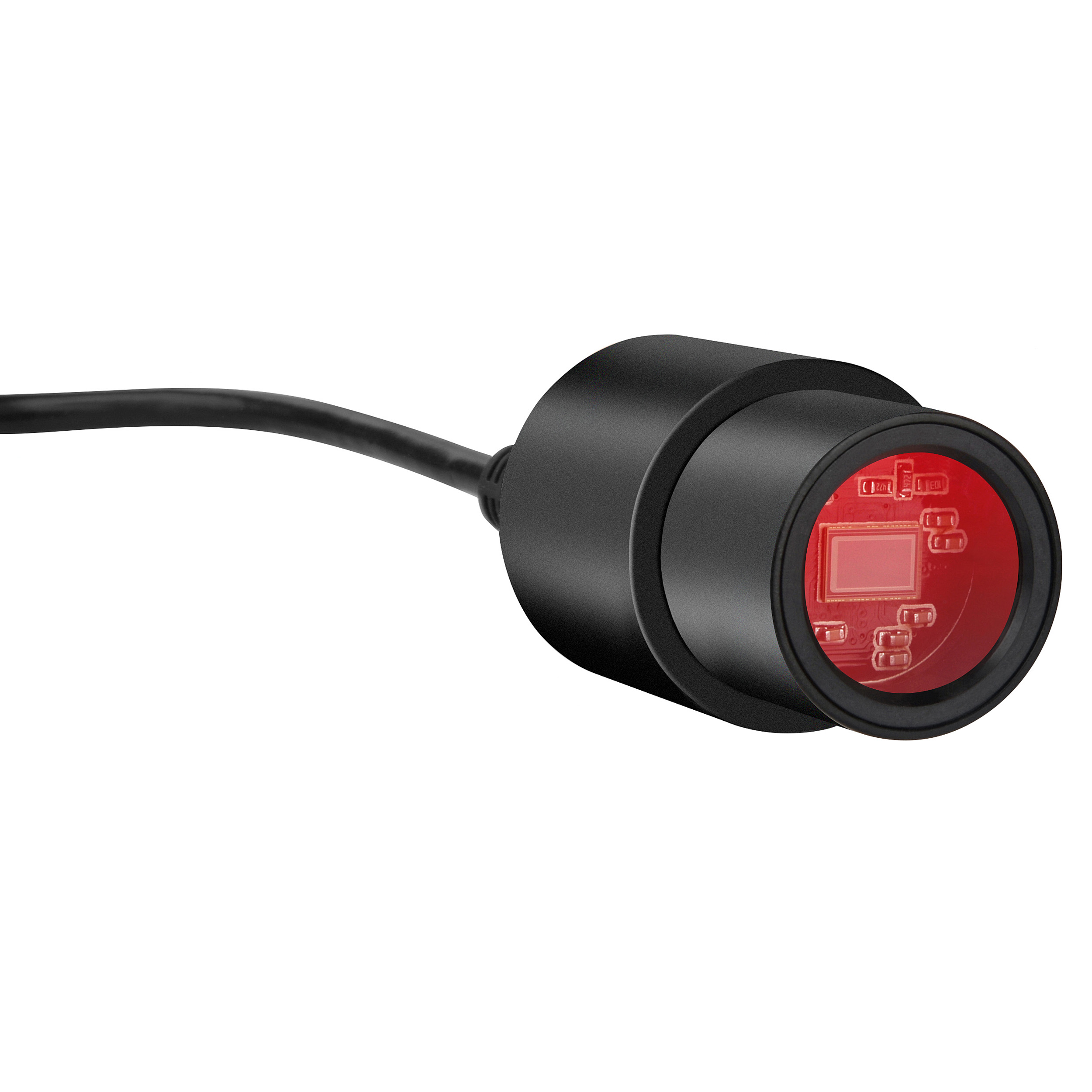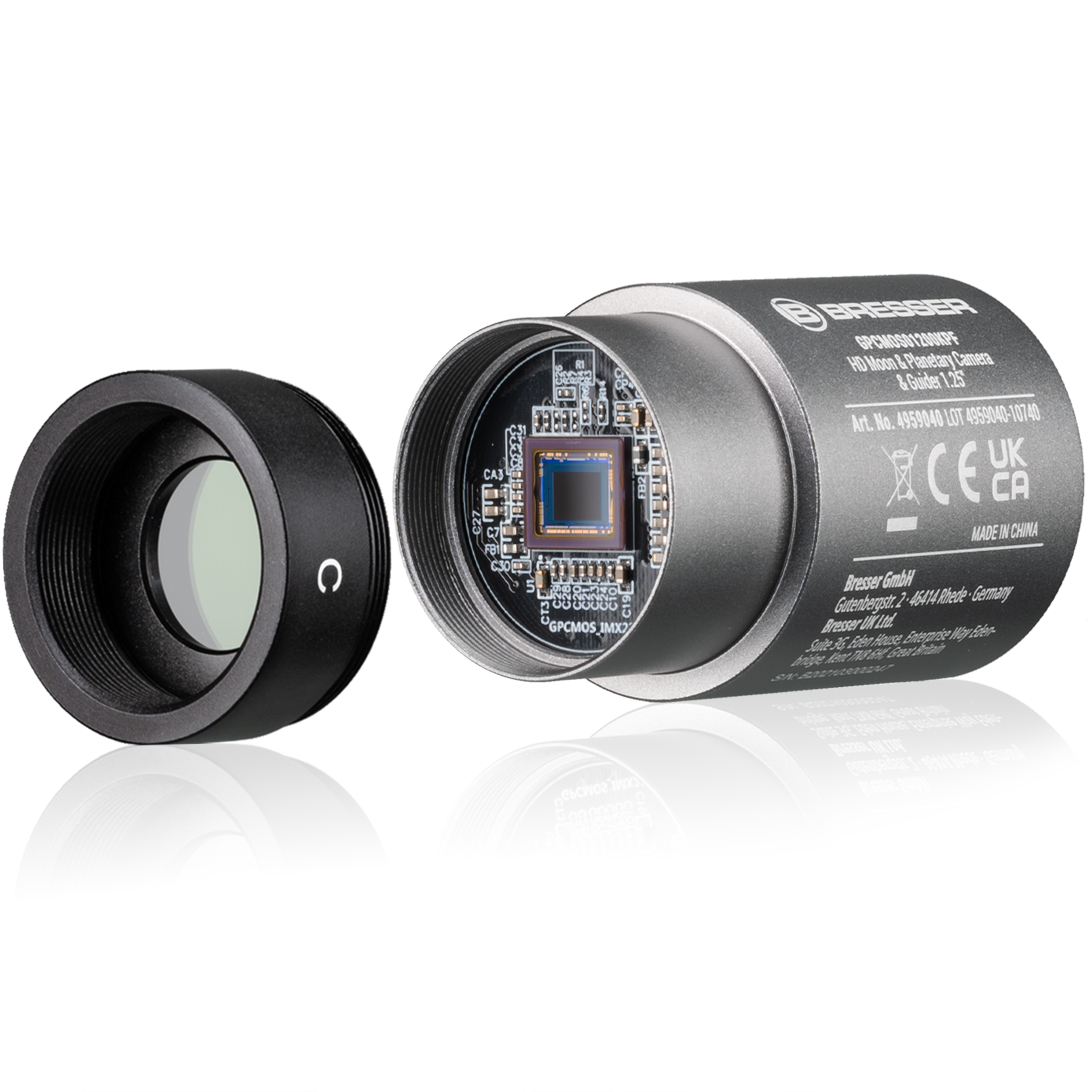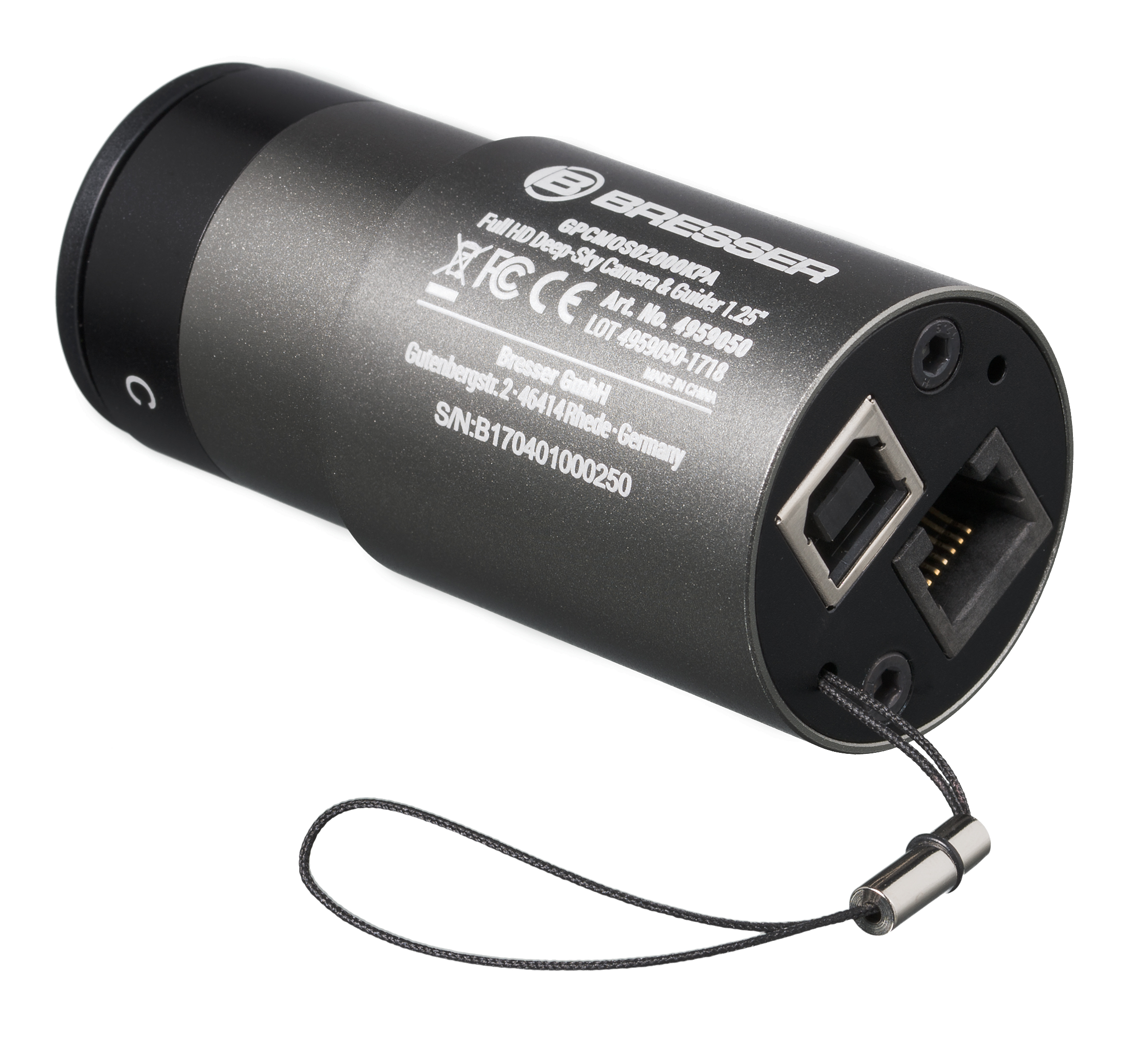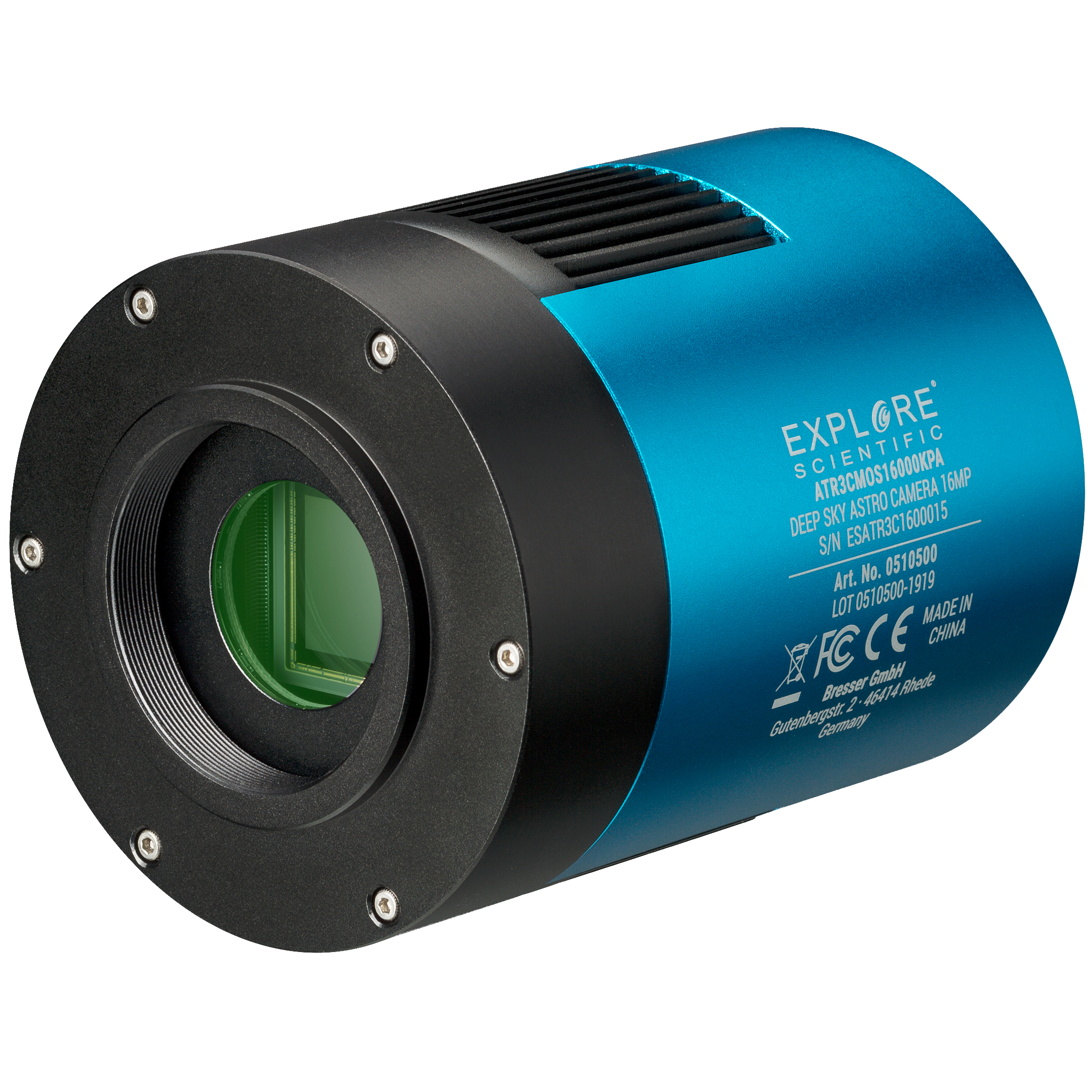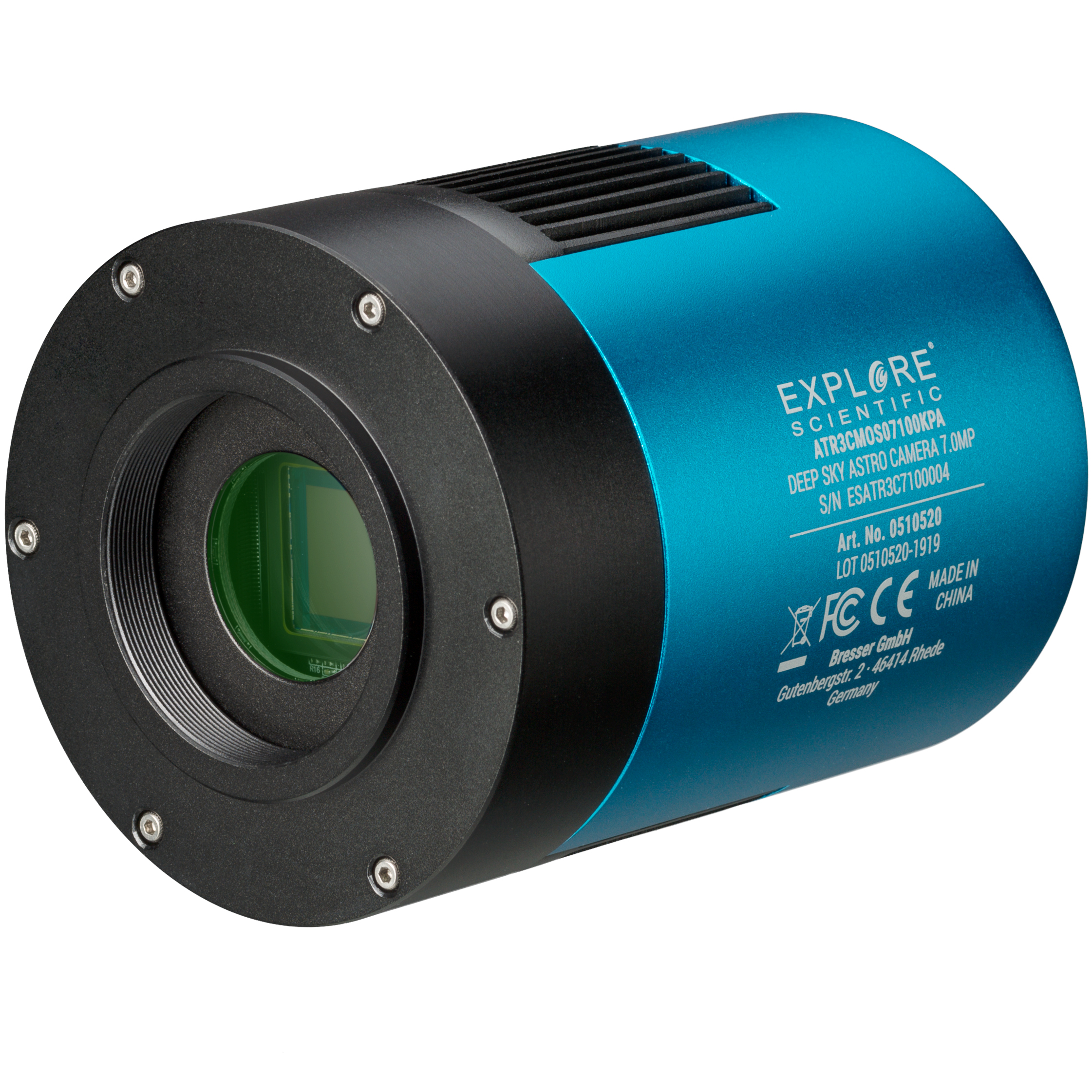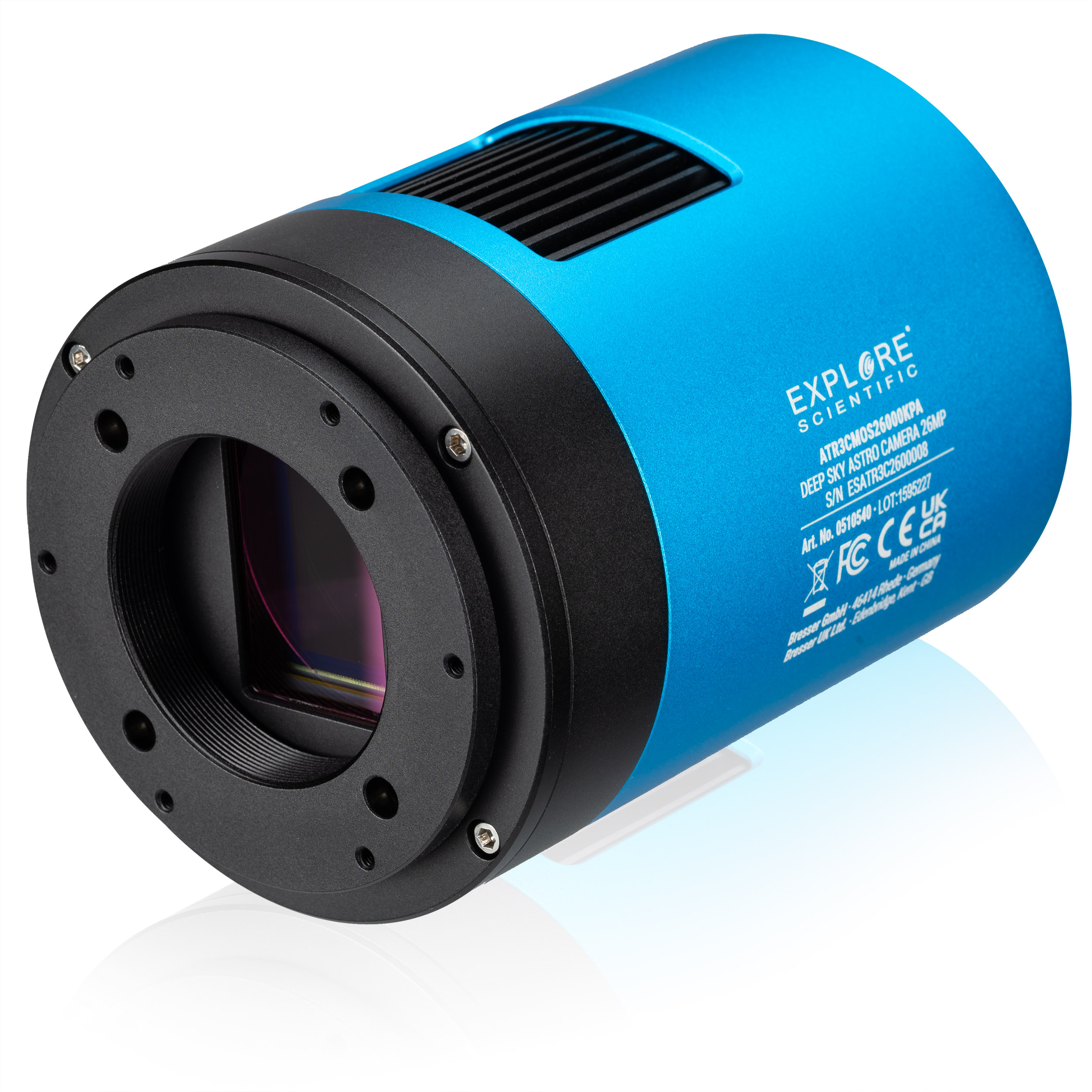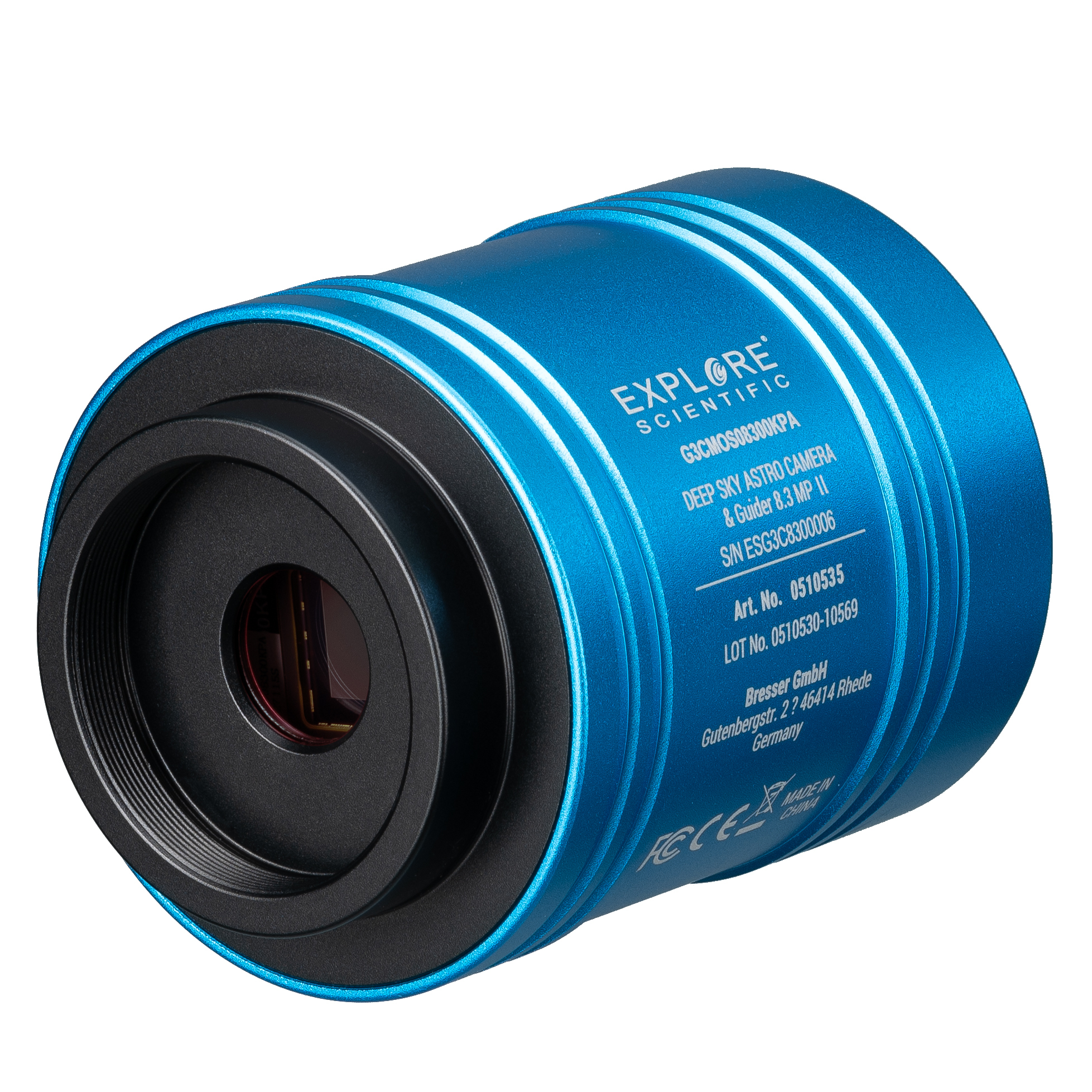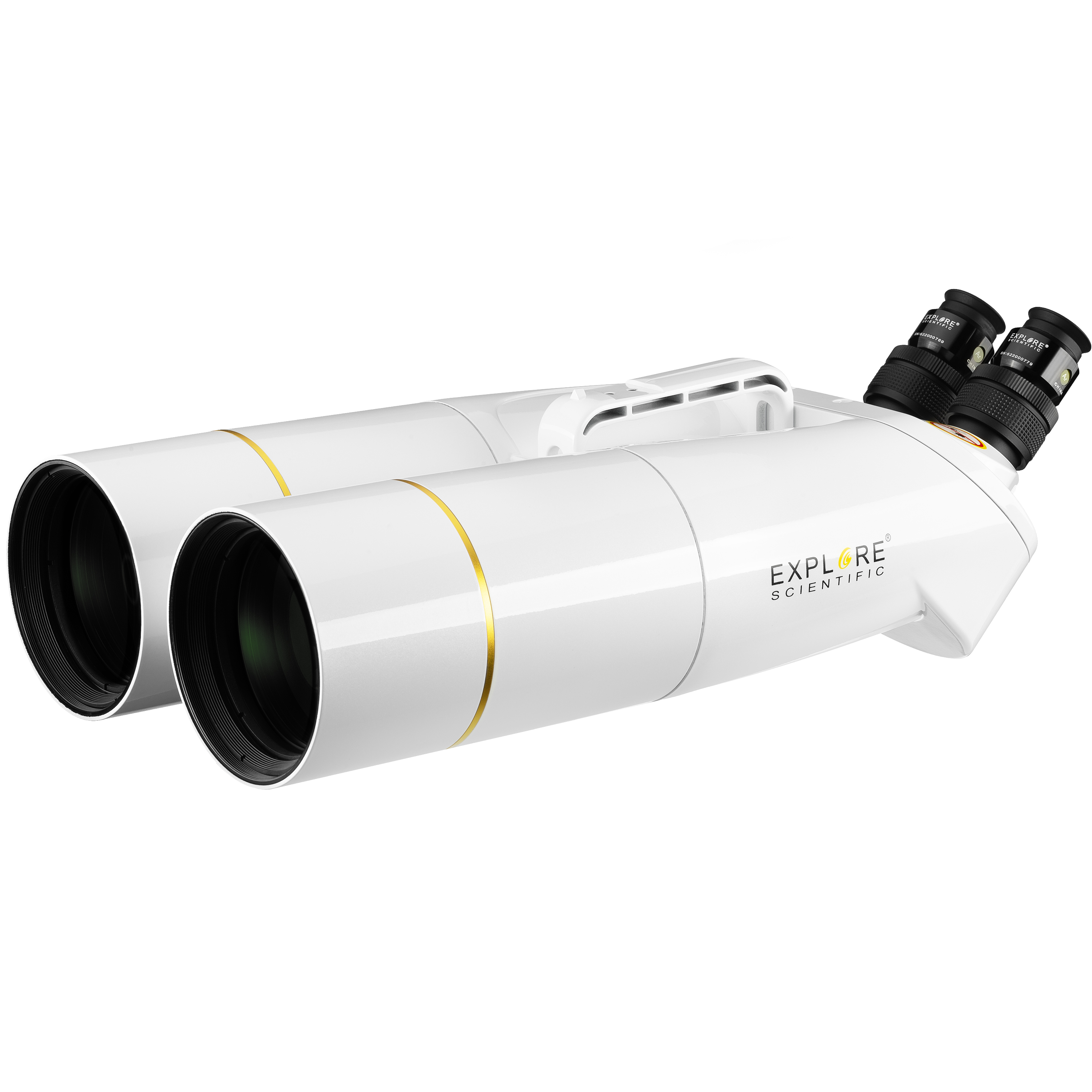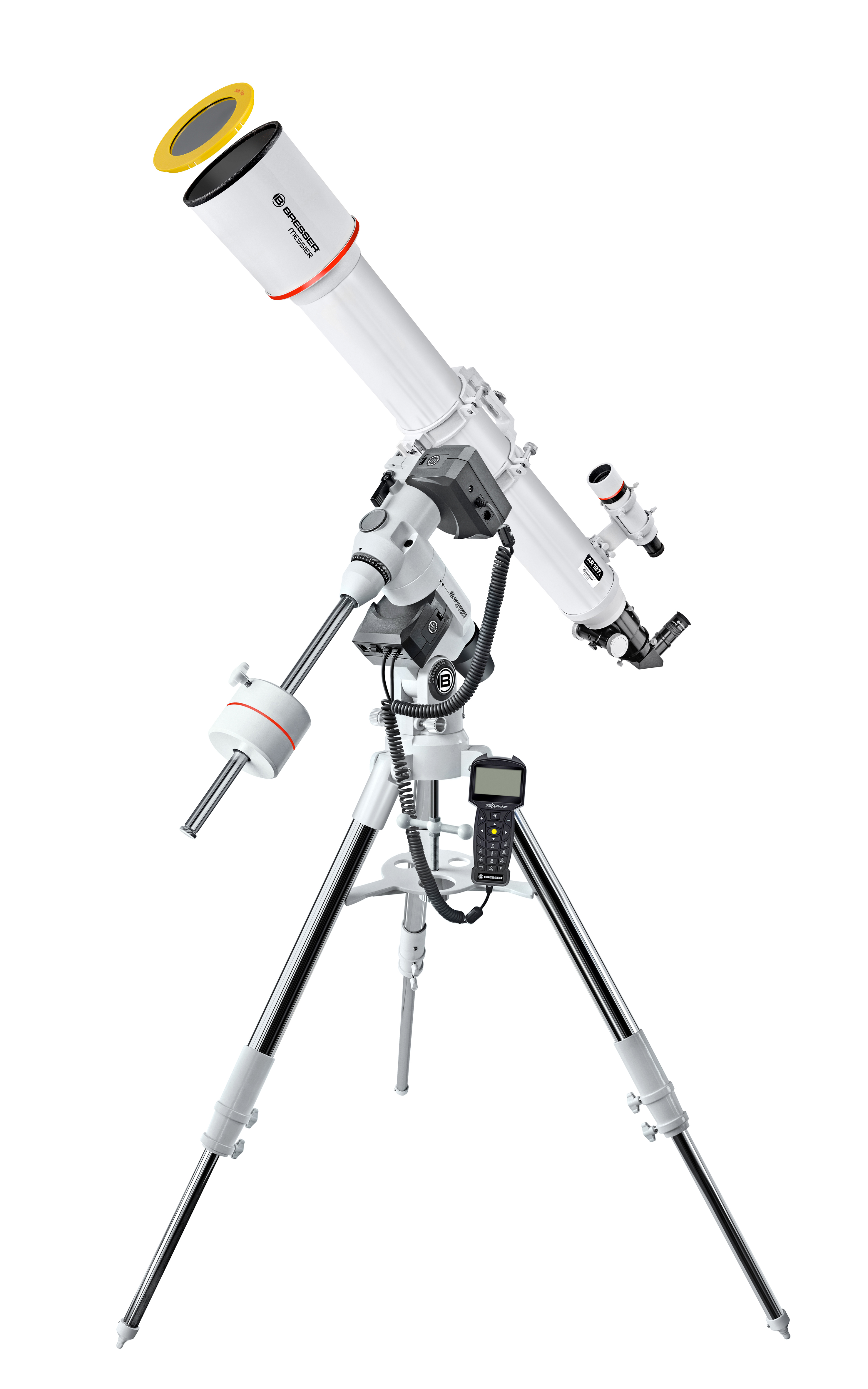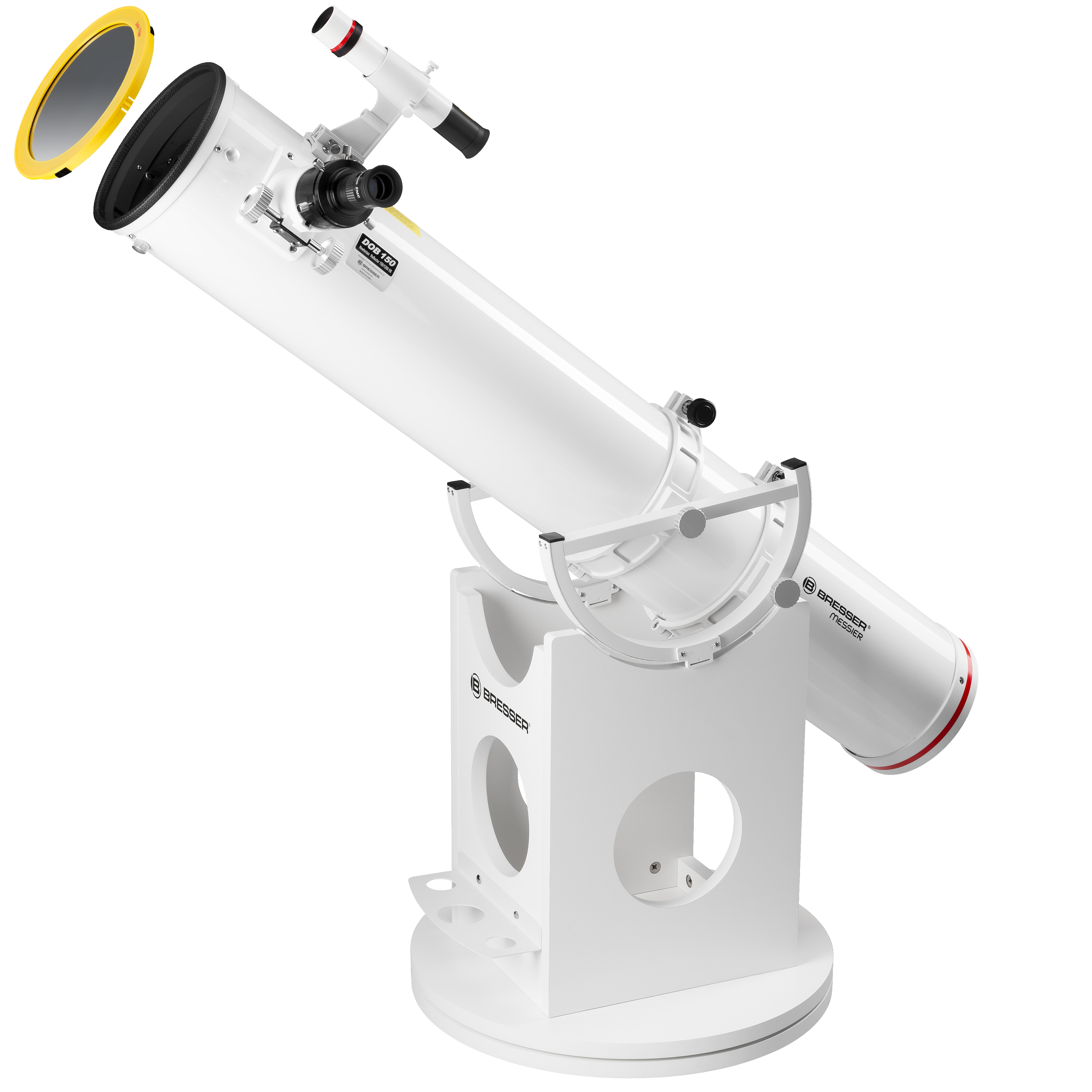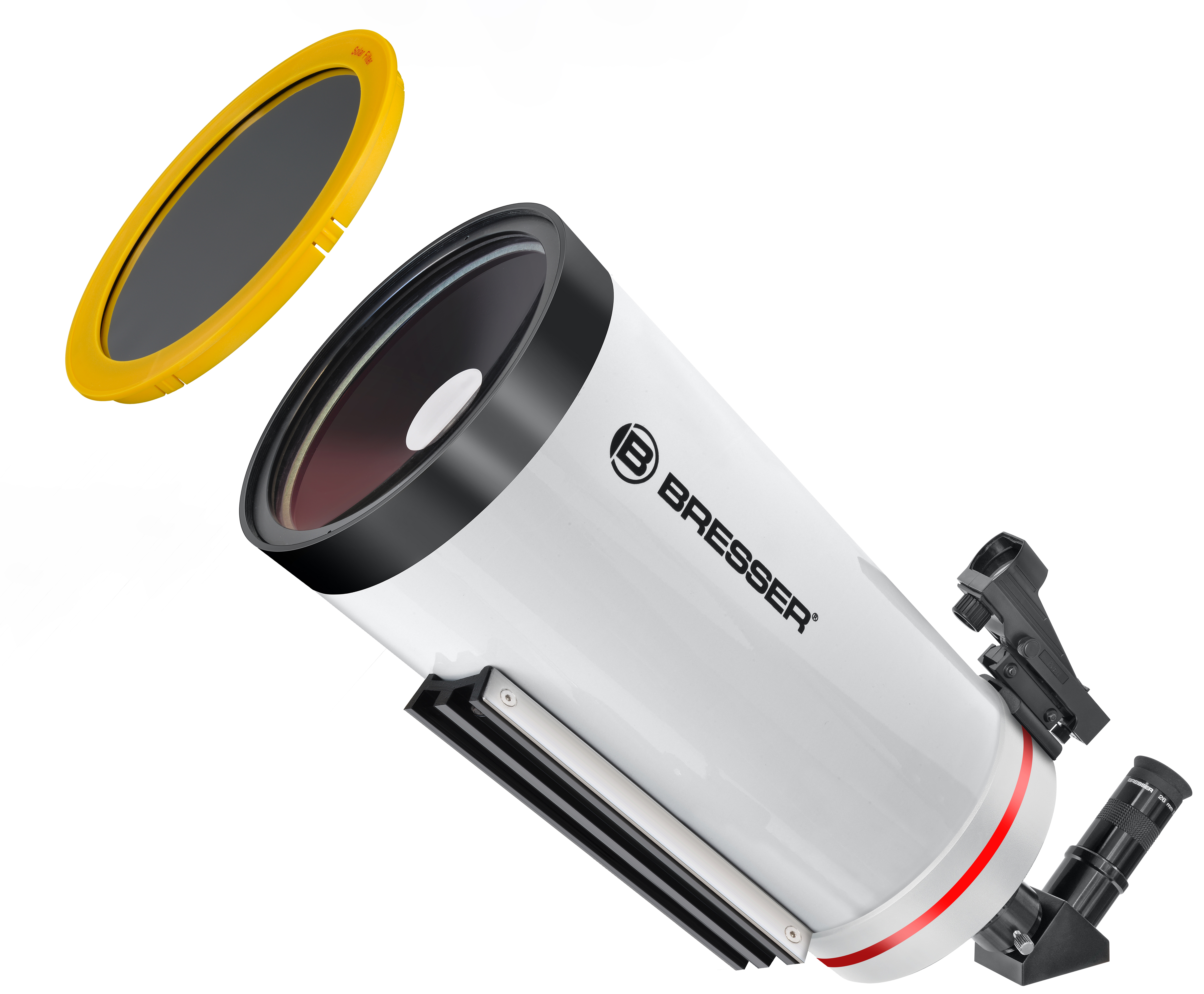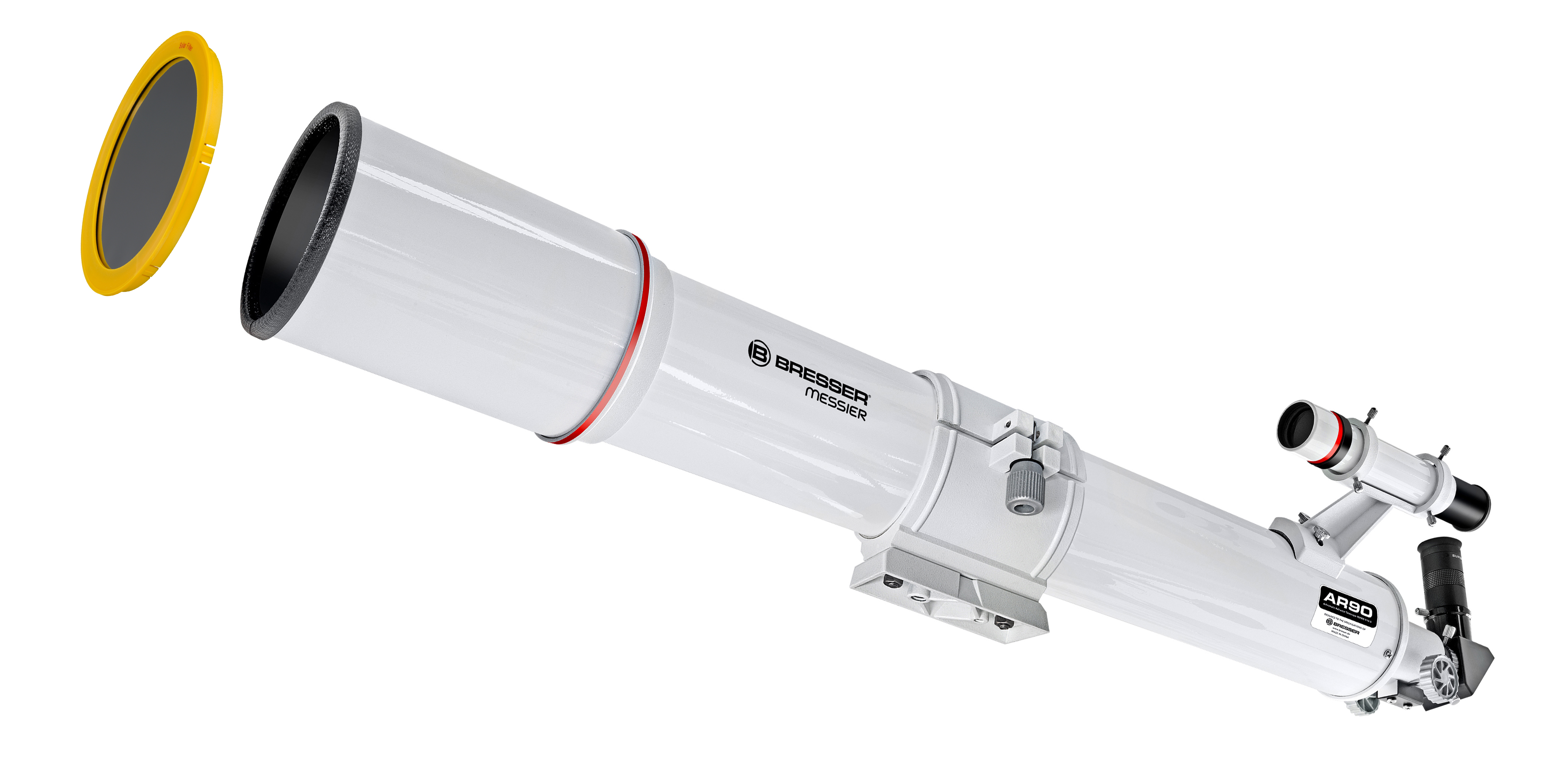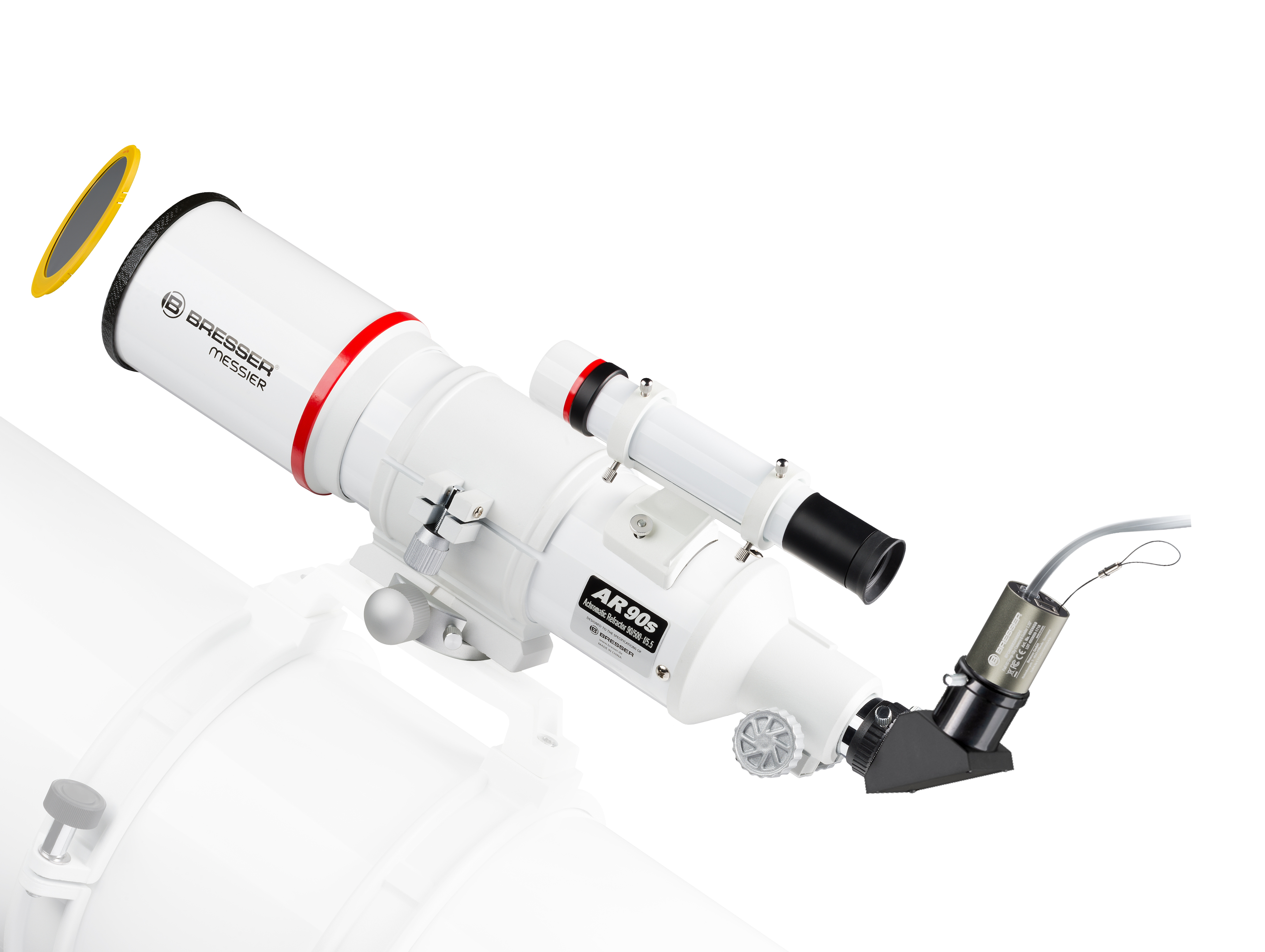
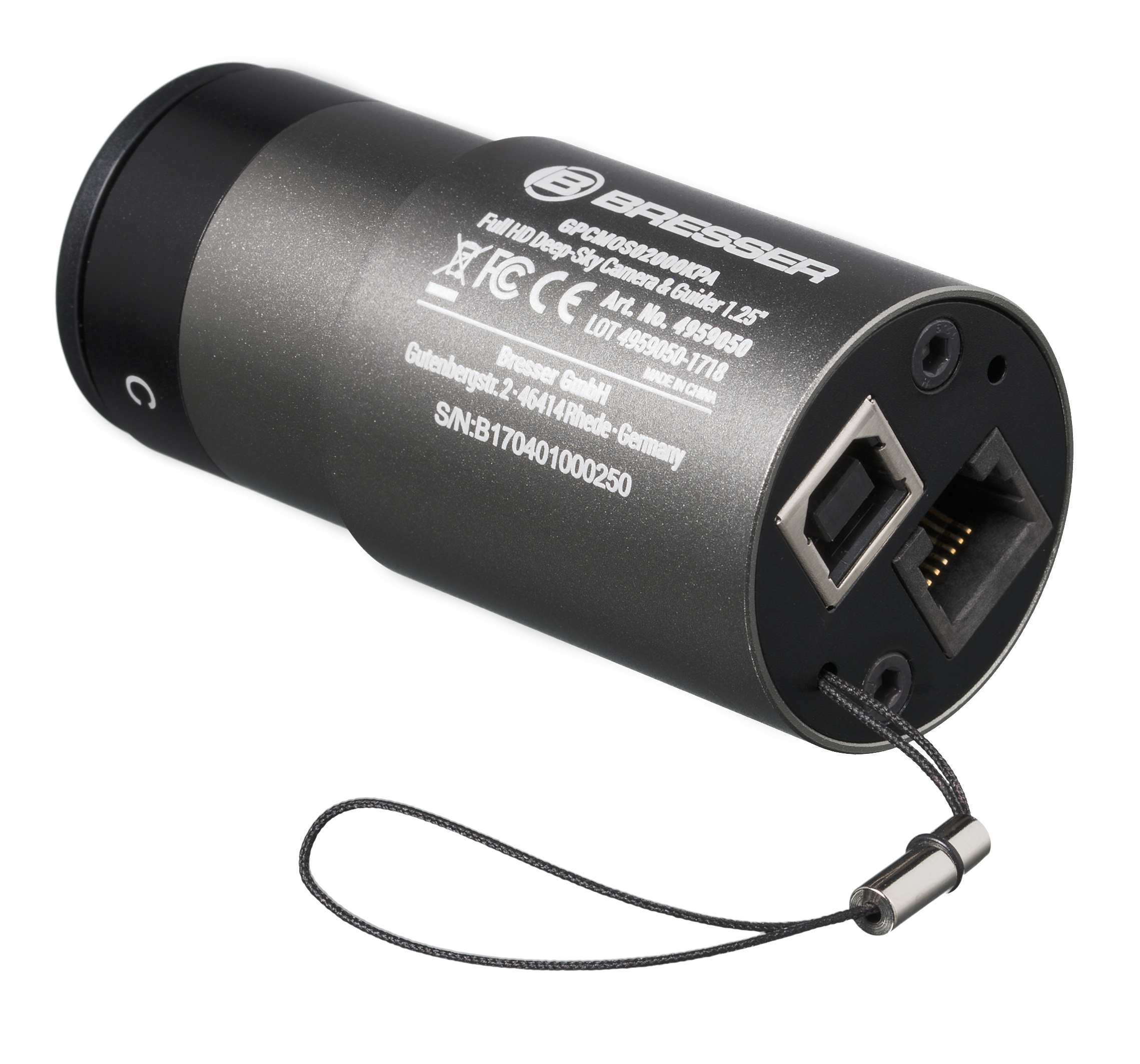
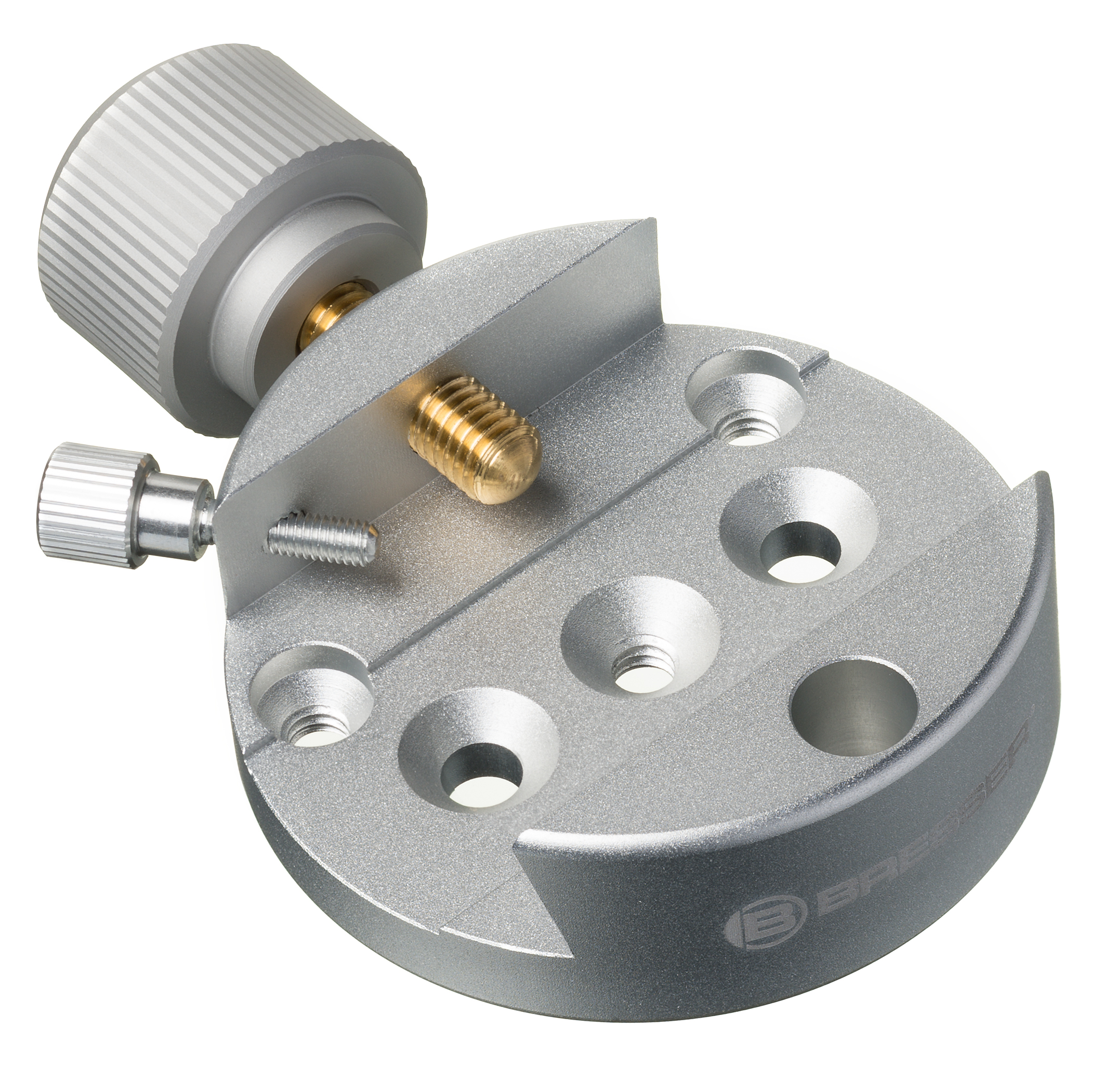
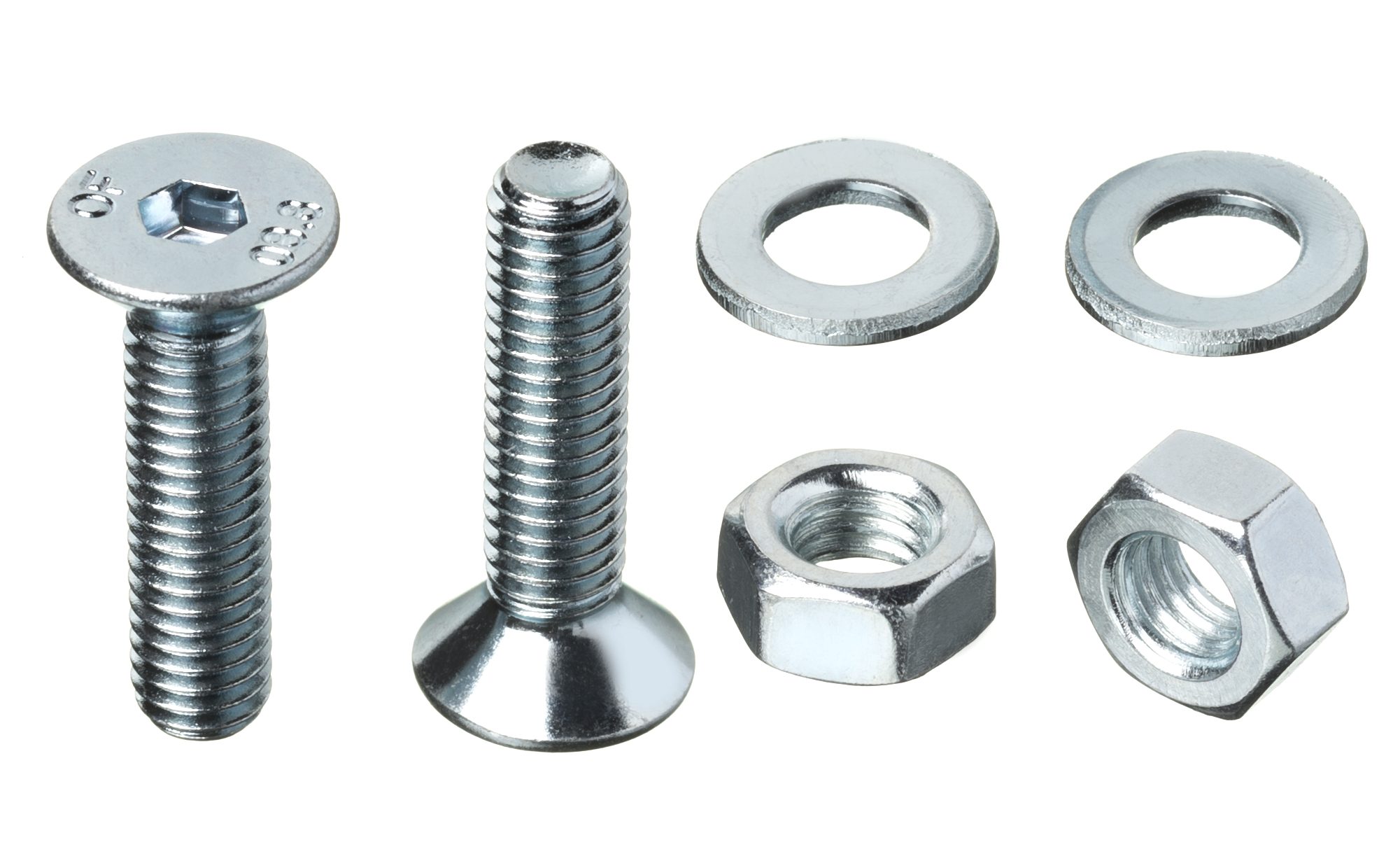
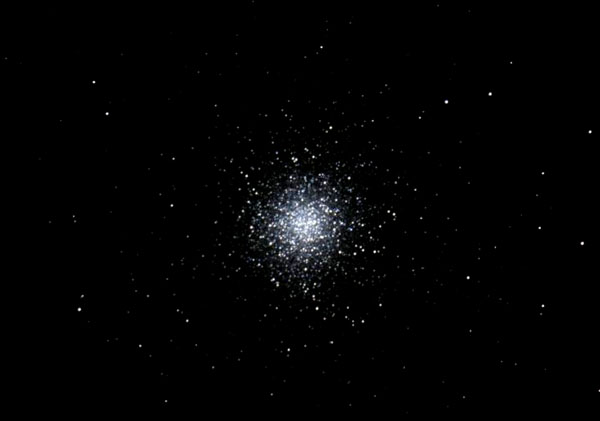
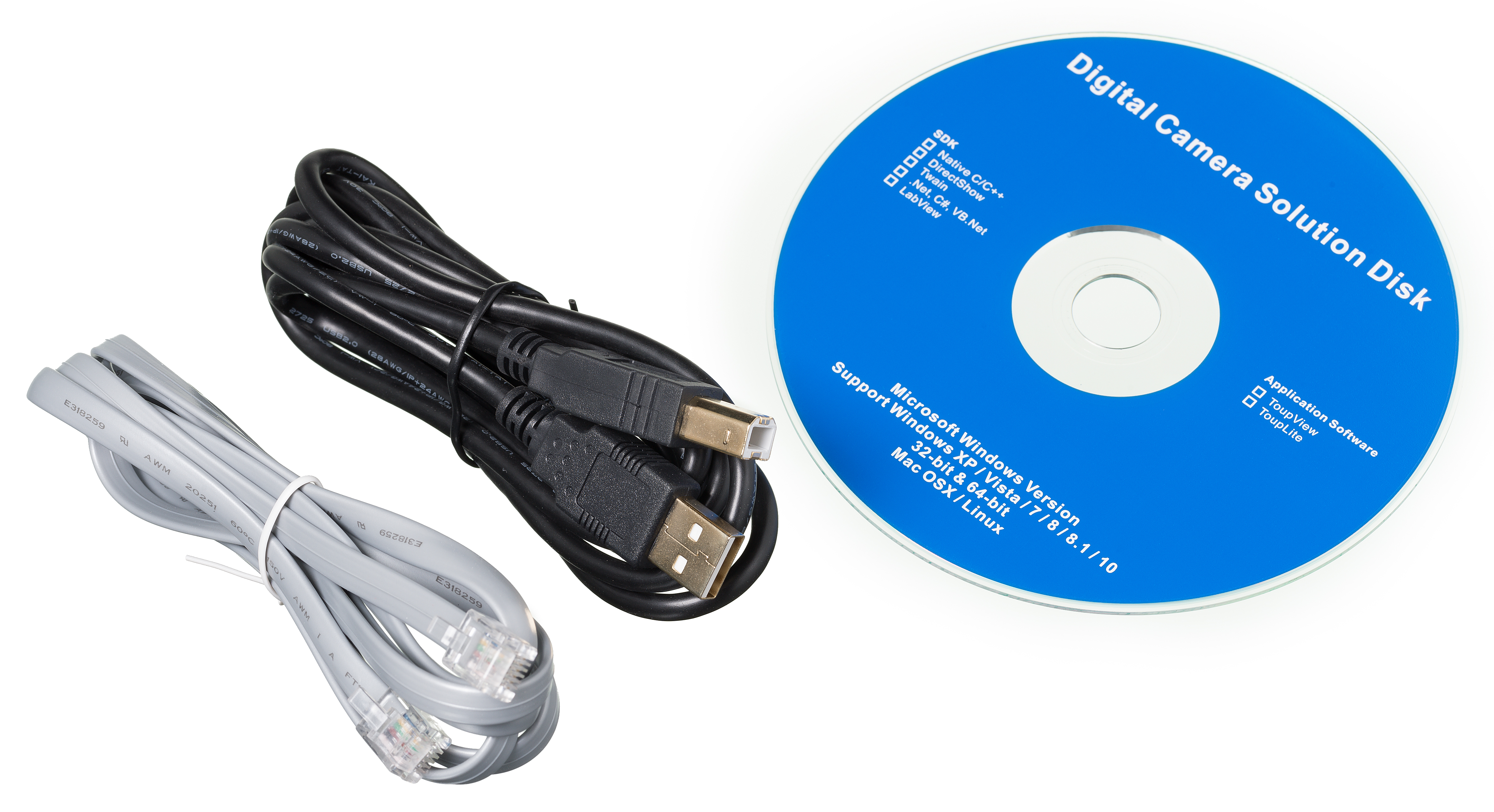
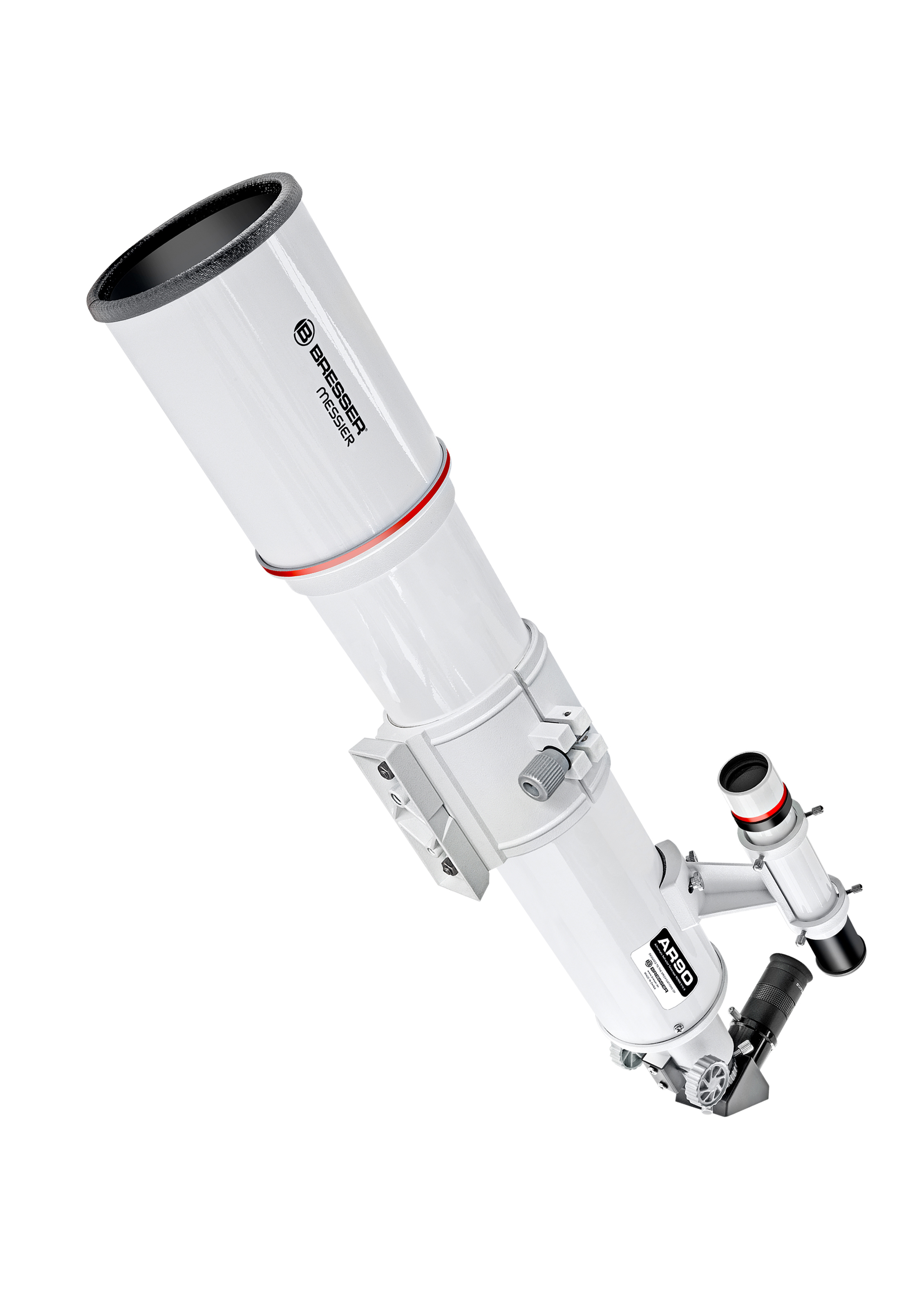





















Guiding Kit AR90/500
- Universal BRESSER Guiding Kit
- Guiding-scope, guiding-camera and dovetail clamp included
- For long exposure Astrophotography with autoguiding
- Aperture / focal length of guiding-scope: 90/500mm
- Screw set for Messier/ES handle included
- Fits also to many other telescopes
- Aperture solar filter for solar observing included
With BRESSER, you can enjoy a smooth introduction to the vast world of astronomy. Our detailed information ("Telescope Guide") provides valuable tips for beginners— but even experienced astronomers can use the information we provide (e.g., tables for the geographical latitude of all major world cities) as a reference.
Here is the table of contents of the comprehensive BRESSER Telescope Guide:
With BRESSER, you can enjoy a smooth introduction to the vast world of astronomy. Our detailed information ("Telescope Guide") provides valuable tips for beginners—but even experienced astronomers can use the information we provide (e.g., tables for the geographical latitude of all major world cities) as a reference.
Here is the table of contents of the comprehensive BRESSER Telescope Guide:
- 2. The View into the Starry Sky
- 2.1 Observing with the Naked Eye
- 2.1.1 Observing Constellations with the Naked Eye
- 2.2 Observing with Binoculars
- 2.2.1 Observing Planets and Moons with Binoculars
- 2.2.2 Observing Deep Sky Objects with Binoculars
- 2.2.3 Every Beginning is Easy
- 2.3 Observing with a Telescope
- 2.4 The Moon
- 2.4.1 The Moon Phases
- 2.4.2 The Far Side of the Moon
- 2.4.3 The Moon Map
- 2.4.4 Maria (Seas)
- 2.4.5 Mare
- 2.4.6 Craters
- 2.4.7 The Ray Craters
- 2.5 Observing the Solar System with a Telescope
- 2.5.1 Where are the Planets?
- 2.5.2 Planet Observation
- 2.5.3 The Position of the Planets Relative to the Sun
- 2.5.4 The Planets Introduce Themselves
- 2.5.5 Deep Sky Observation with a Telescope
- 2.6 Practical Observation Tips and Tricks
- 2.6.2 Tips for Optimal Observation Conditions
- 2.7 The Most Beautiful Objects Throughout the Year
- 4. Telescopes
- 4.1 The Telescope as an Observation Instrument
- 4.2 Optics
- 4.2.1 Refractor (Lens Telescope)
- 4.2.2 Reflector (Mirror Telescope)
- 4.3 Mechanics
- 4.3.1 Altazimuth Mount
- 4.3.2 Equatorial Mount
- 4.3.3 Drive Motors
- 4.4 Accessories
- 4.4.1 Eyepieces
- 4.4.2 Important Tips for Eyepiece Selection
- 4.4.3 Filters
- 4.4.4 Photographic Accessories
- 4.4.5 Other Accessories
- 5.1 Which Telescope for Whom?
- 5.1.1 Deep-Sky Observations
- 5.1.2 Observing Closer Planets
- 5.1.3 The Topic of Portability
- 5.1.4 Price Factor When Buying a Telescope
- 6. Useful Tables
- 6.1 Table for the Geographic Latitude of All Major World Cities
- 6.1.1 Observers in the Northern Hemisphere (N):
- 6.1.2 Observers in the Southern Hemisphere (S):
- 6.2 Lookup Table for Notable Stars
- 6.3 Getting Acquainted with the Universe - or: Distances in Space
Simply mount the prism clamp with the mounting screws on the carrying handle of the BRESSER Messier and EXPLORE-SCIENTIFIC telescopes and the AR90 / 500 guide scope with tracking camera can already be fixed stably parallel to the main telescope. The tracking camera is now connected directly to the ST-4 compatible autoguider socket of your telescope mount. Connecting the tracking camera via USB cable to your Windows computer and install the camera drivers and any Autoguider software - you can start with the astrophotography.
The prism clamp has 2 x 6mm countersunk holes (35mm hole spacing) and 3 further 1/4 "photo tapped holes to allow for versatile adaptation to a variety of other telescopes and adapter plates. The tracking camera is very useful for tracking Recording of planets and even deep-sky objects. A detailed description of the tracking camera can be found at the BRESSER article number 4959050.
DOWNLOAD PHD-Guiding: http://www.stark-labs.com/phdguiding.html
DOWNLOAD GuideDog: http://barkosoftware.com/GuideDog/index.html
FEATURES
- Universal BRESSER Guiding Kit
- Guiding-scope, guiding-camera and dovetail clamp included
- For long exposure Astrophotography with autoguiding
- Aperture of guiding-scope: 90mm
- Focal length of guiding-scope: 500mm
- Screw set for Messier/ES handle included
- Fits also to many other telescopes
SCOPE OF DELIVERY
- Guiding-scope BRESSER Messier AR90/500 (Art.Nr. 4890500) + Acc.
- Guiding-camera BRESSER GPCMOS02000KPA color (Art.Nr. 4959050)
- Dovetail-clamp for Messier/ES/GP/Vixen (Art.Nr. 4910220)
- Screw-set for Messier/ES handle included
- USB 2.0 cable (camera to computer)
- ST-4 cable (camera to teleskope mount)
- Camera driver software + ASCOM driver
- Professional ToupSky imaging software
- Aperture solar filter for solar observing included
| Colour: | white |
|---|---|
| Material: | Aluminium |
Similar products
Customers also viewed


